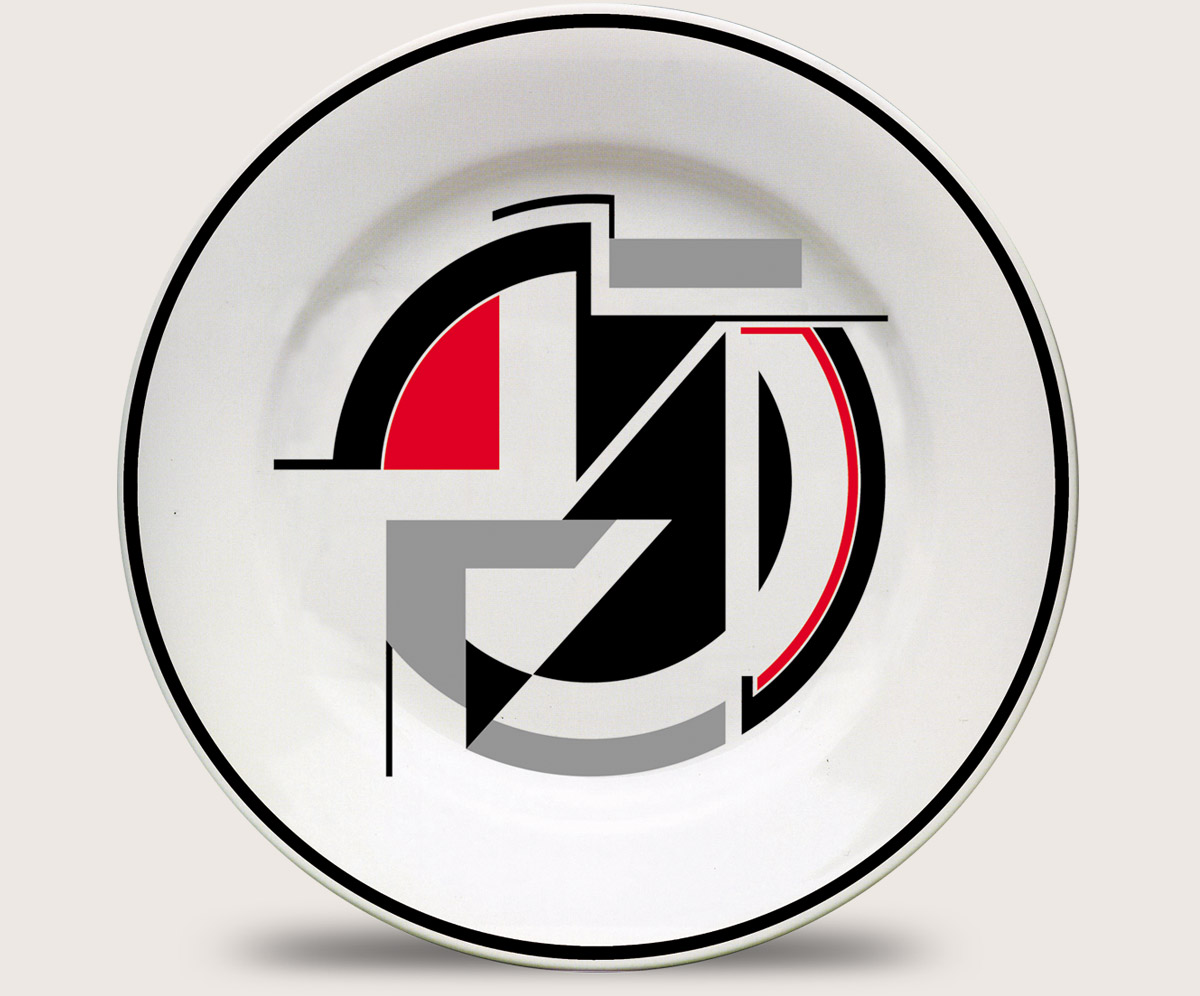
Every Revolution Needs Some Smashing Plates
03.11.17
A 1985 Exhibition of Soviet Design came to London and showed Mark Perryman the real meaning of revolution
1985. Thatcherism reigned triumphant. The Miners Strike was coming to a sorry end. With Reagan in the White House the second Cold War dominated what remained of international relations. It was perhaps curious therefore that the Crafts Council of England and Wales should choose to open the year with an exhibition of Soviet textiles, fashion and ceramics 1917-1935, Art into Production.
In 2017 there has been a whole host of Russian Revolution centenary exhibitions, conferences, TV specials and the like. But 1985? The extraordinary richness of the art however was more than sufficient to resist and reverse the pessimism that leftist visitors to the exhibition like myself were suffering from as any prospect of a progressive, let alone a socialist, politics receded ever further into the faraway distance. The emotional downturn of opportunities for change in turn created bitter divisions in and around a Left in retreat . If our lot was convinced we were right, then we were absolutely certain the other lot were wrong, and this was just on our own side. 
How could a dash of 1917 and afters art impact upon this? In the beautifully produced exhibition catalogue, there were some lines extracted from Komsomol’skaya Pravda, the newspaper of the Young Communist League, 28th April 1928 which began to form in my mind a very different approach to a Left cultural politics to the one most of us were used to. And as the 1917 centenary fast approached, with a resurgent Corbynite Left too, I’ve been reminded of those words:
“ We must not accept this ‘non-resistance’. The cultural revolution, like the bugler’s trumpet, is summoning for examination and revaluation everything which mobilises or poisons our consciousness, our will and our readiness for battle!”
So far. So familiar. The over-familiar instrumentalism of almost all versions of socialist, and communist too, cultural politics. But then the extract took a less predictable turn:
“In this ‘parade’ of objects there are no non-combatants – nor can there be! Plates and cups, ie things we see daily, several times a day, which can do their bit for the organising of consciousness – these occupy an important place.”
Blimey, this was wasn’t the usual socialist fare I was well-used to. OK susceptible to a workerist ‘prolecult’ tendency perhaps, though the colourful, often highly feminised, designs throughout the exhibition indicated this was a relatively minor deviation (sic). Rather what the young communists of 1928 were mapping out was a cultural politics that was both all-embracing and highly practical. Pluralist and pre-figurative as the leftie-jargon speak I had learnt by ’85 to drop into any conversation of the right political sort might describe such a venture. And they weren’t going to put up with any naysayers and feet draggers either:
“ We demand that a plate should fulfil its social function. We demand that the role of everyday objects should not be forgotten by our young specialist artists and the bodies in charge of our industry.”
It is easy to mock the idealism but if the debates over what is, was, should, be done in 1917 serve to mask the boldly radical ambition therein then we surely lose something invaluable. This is what Art into Production all those years ago achieved and I’ve never forgotten it. More recently Owen Hatherley’s peerless book Landscapes of Communism does something similar via the architecture of the Soviet era . Or poet Rosy Carrick’s stunning reading of Mayakovsky’s epic poem Lenin. And cartoonist Tim Sanders hugely imaginative depiction of the events of October 1917 via the subversive idiom of a graphic novel, Russia’s Red Year. All three sit outside the orthodoxy of both an establishment culture that treats the Russian Revolution purely as an historical event and a tendency on parts of the Left to divorce the insistence on a particular political interpretation of the revolution from a broader understanding of the heady idealism 1917 inspired but could never entirely discipline to its own ends. In this regard each is both a most welcome addition to the centenary celebrations but also I ‘d suggest an approach to understanding the Russian Revolution that in their different ways can be traced back to those young Communists of 1928 exhorting the production of socialist plates, cups and saucers.
Also coinciding with the centenary has been the release of Armando Iannucci’s blockbuster comedy The Death Of Stalin. The man behind the brilliantly funny The Thick of It which skewered the Blairite world of spin and soundbites with brutal wit has turned to an era that the film’s posters mischievously describe as ‘ a comedy of terrors’. Only the most po-faced would stifle the laughs as one wisecrack after another demolishes what Stalinism had turned Soviet Russia into. But the film ends up being satirical for a cheap laugh’s sake and leaves this cinemagoer at least with a sense that if all we are left with is the cynicism of pointlessness then the prospects for change are inevitably narrowed and all we are left with is the motto ‘who cares, who wins’. This is what the likes of Iannucci, Private Eye and Have I Got News for Youthrive on, a manufactured anti-politics with the lazy assumption that everybody is as bad as each other and never mind either the causes or consequences. The political clowning of Boris Johnson becomes the natural expression of all this, a rebel without a cause except his own personal advancement. Oh c’mon he’s only having a laugh, and what’s the harm in that. £350m for the NHS thanks to #Brexit has at last partly put paid to that sorry myth.
So instead of rollicking in the cinema aisles as one Death of Stalin joke piles into another I prefer to cling to my necessity of having some smashing plates, mugs and saucers. Framed by the utopian idealism for a better world than the one that those in Russia had endured in the years preceding 1917, visualising via the most vivid combination of imagination, originality and clash of colours the prospect of constructing a new society. When that hopeful vision is absent then our capacity to imagine what change might look like lacks something vital too. A sentiment worth preserving via some tasty antique ceramics. Not trapped by the past, that way spells dogma and cultural conservatism. But there is something wrong too with the ahistorical version of modernity which became the watchword of 1990s Blairism. If it’s old it must be crap, the denial therefore of the past ever inspiring the present towards changing what the future otherwise has in store for us.. And most crucially, if you like the revolutionary element, given practical expression via its lived presence in the everyday. Pasokification across Europe has led to a new era of headlong retreat for social democracy buyt this time accompanied by an insurgent, popular, Left that is seeking to challenge and transcend the limitations imposed upon it by a wholesale surrender to neoliberalism. The advances are patchy, and incomplete, not remotely revolutionary according to the 1917 model but decidedly radical and seeking a decisive rupture with the existing system of ideas. In 2017 that’s more than enough for me. 
So where do the plates, mugs and cups of 1917 fit in to all of this? Not to merchandise but to politicise. The revolutionary ceramics, and the process of production the Young Communists demanded is entirely different from the naff trinkets and trifles emblazoned with Jeremy Corbyn’s name and face the Labour was flogging at party conference and no doubt on the stocking-filler list for a fair few Corbynite Christmas treats come 25th December too. Harmless fun, well sort of, and to declare an interest yes Philosophy Football has produced its own COR 8YN T-shirt but if that is the scale of our imagination and productive capacity it just shows how far we still have to go to get anywhere close to the scale of ambition of those 1917 plates. What might a 2017 version look like, fired up and framed by The Corbyn Effect? That’s the kind of question I’d like to hear both being asked, and answered with practical output. And in that process of originality and production creating a great variety of means to identify with a politics that can effect a wholesale shift in the balance of forces from those few, to our many. Now that’s what I call politics.
The 1917 centenary plates collection reproducing original Soviet designs is available fromPhilosophy Football